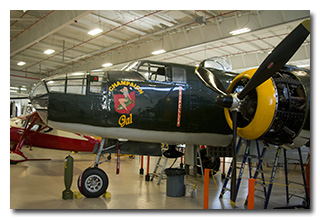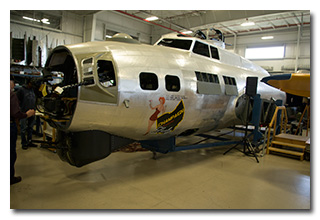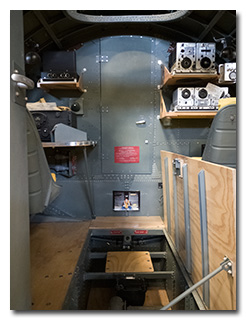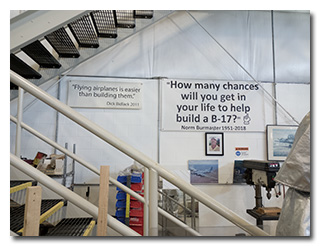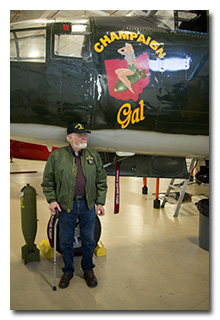
by William Eric McFadden
From the nature preserve's website:
-
This mature forest woodland has numerous large tuliptrees, sugar maple, ash and oak as well as an excellent array of spring wildflowers. It is one of the best woodlots remaining in this part of Ohio. Named in honor of the Davey Tree Expert Company which, through The Nature Conservancy, provided half the funding to acquire this site in 1989. The terrain, hilly for this part of Ohio, offers pleasant summer hiking (no mosquitoes), nice fall colors and a beautiful winter landscape.
Pictures, Champaign Aviation Museum
Pictures, Davey Woods State Nature Preserve
Description
On Wednesday, February 15, 2023, one member of the Southeast Ohio Radio Adventure Team performed a successful activation of Davey Woods State Nature Preserve in Ohio as part of the Parks on the Air (POTA; link) program.
Eric McFadden, WD8RIF, visited at Davey Woods State Nature Preserve while on the way home from a fascinating guided tour of the Champaign Aviation Museum.
First, Champaign Aviation Museum
The primary reason for the 125-mile drive from Eric's home in southeastern Ohio to Champaign County, Ohio, was to join his parents and nephew for a docent-led tour of the Champaign Aviation Museum (link) at Grimes Municipal Airport.
The Champaign Aviation Museum has a beautiful, B-25J, "Champaign Gal", that flies regularly, and the volunteer staff are essentially building a new B-17G Flying Fortress, "Champaign Lady". This B-17G build is based on fuselage sections from three crashed B-17 airframes, in addition to such recovered items as engines, ball-turret, and top-turret. The staff are making, by-hand, much of the remaining aluminum structure of the airplane. The intention is to build "Champaign Lady" to fly. The museum also has a recently-acquired C-1A Carrier On-Board Delivery (COD) aircraft, "Mudflap Girl", that will soon be restored to flying status.
Then, POTA at Davey Woods State Nature Preserve
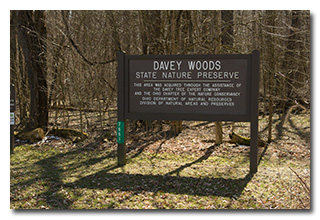 Following the visit to the Champaign Aviation Museum, Eric drove the short distance to Davey Woods State Nature
Preserve, arriving at about 1845 UTC. Finding a space in the small parking area, he set up his 28½'
wire vertical on his Jackite 31' telescoping fiberglass mast and drive-on mount. Because of the cool temperature,
Eric set up his Elecraft KX3 inside the car. Eric was on the air at 1852 UTC.
Following the visit to the Champaign Aviation Museum, Eric drove the short distance to Davey Woods State Nature
Preserve, arriving at about 1845 UTC. Finding a space in the small parking area, he set up his 28½'
wire vertical on his Jackite 31' telescoping fiberglass mast and drive-on mount. Because of the cool temperature,
Eric set up his Elecraft KX3 inside the car. Eric was on the air at 1852 UTC.
Eric initially thought he had good cell-signal at this location but soon realized his signal was only strong enough to allow reliable sending and receiving of texts—he would not be able to spot himself on POTA Spots (link) or consult POTA Spots to identify possible park-to-park (P2P) QSO opportunities.
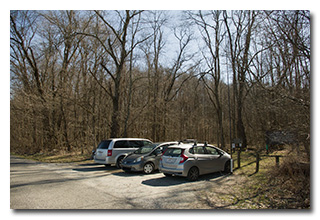 Eric began his operation on 20m by finding a frequency to run and calling "CQ POTA". As soon as he
discovered he couldn't load the POTA Spots website on his smartphone, he texted his friends K8RAT and
K4SWL, and K8RAT was able to spot him to POTA Spots. Eric's first QSO came at 1856 UTC with POTA stalwart
K0BWR in Kansas. QSOs came very quickly, with Eric's thirtieth QSO coming only thirty-two minutes
later at 1924 UTC with KO4NTA who was activating Colt Creek State Park (K-1848) in Florida. This run
included a P2P QSO with KR8L who was activating Mermet Lake State Fish and Wildlife Area (K-4143) in
Illinois; a pair of P2P QSOs with VA3DXP who was activating Diefenbunker National Historic Site (VE-5083)
in Ontaria, operating in the bunker's underground radio station using both his own callsign and the Cold War Museum's
callsign, VE3CWM; the aforementioned P2P QSO with KO4NTA; and QSOs with operators located in
Kansas (2), Missouri (2), Wisconsin (2), North Carolina (3), Georgia (3), Maine, Florida (2), Michigan (2),
Idaho, New Jersey (2), New York, New Hampshire, Illinois, Ontario (3), Arkansas, South Carolina (2), and
Minnesota.
Eric began his operation on 20m by finding a frequency to run and calling "CQ POTA". As soon as he
discovered he couldn't load the POTA Spots website on his smartphone, he texted his friends K8RAT and
K4SWL, and K8RAT was able to spot him to POTA Spots. Eric's first QSO came at 1856 UTC with POTA stalwart
K0BWR in Kansas. QSOs came very quickly, with Eric's thirtieth QSO coming only thirty-two minutes
later at 1924 UTC with KO4NTA who was activating Colt Creek State Park (K-1848) in Florida. This run
included a P2P QSO with KR8L who was activating Mermet Lake State Fish and Wildlife Area (K-4143) in
Illinois; a pair of P2P QSOs with VA3DXP who was activating Diefenbunker National Historic Site (VE-5083)
in Ontaria, operating in the bunker's underground radio station using both his own callsign and the Cold War Museum's
callsign, VE3CWM; the aforementioned P2P QSO with KO4NTA; and QSOs with operators located in
Kansas (2), Missouri (2), Wisconsin (2), North Carolina (3), Georgia (3), Maine, Florida (2), Michigan (2),
Idaho, New Jersey (2), New York, New Hampshire, Illinois, Ontario (3), Arkansas, South Carolina (2), and
Minnesota.
In all, Eric made thirty QSOs, including four P2P QSOs, in thirty-two minutes of on-air time. All of Eric's QSOs were CW and were made with five watts output.
(return)
